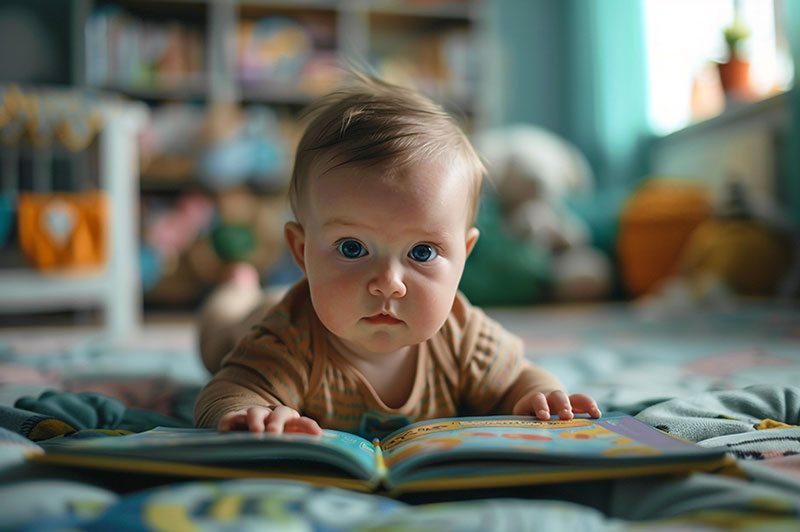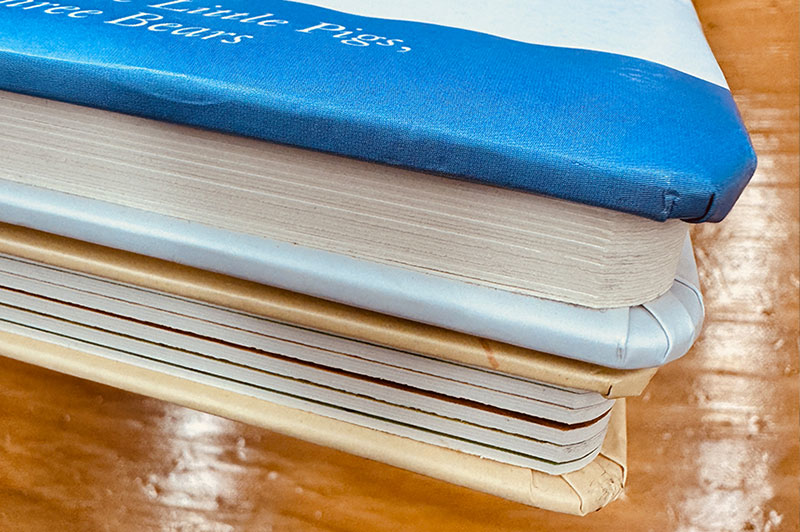Hardcover vs Board Book:
How to choose for young readers

When embarking on a children's book project, one of the most crucial production decisions you'll face as a publisher, author, or designer is choosing between hardcover and board book formats. This choice extends far beyond manufacturing preferences—it fundamentally shapes your book's market position, production costs, and ultimately its success with the intended age group. Whether you're planning a bedtime story collection, an educational series, or a standalone picture book, understanding the distinct advantages and manufacturing requirements of each format will help you make an informed decision for your next printing project.
What is a board book?

Board books are the sturdy warriors of the children's book world. Designed with the youngest readers in mind, these books are crafted from thick paperboard that's carefully layered and pressed to create virtually indestructible pages. When you hand a board book to a baby or toddler, you're giving them more than just a book—you're providing a safe, durable tool for exploration and learning.
From a production standpoint, board books represent a specialized segment of children's publishing that demands specific manufacturing considerations. The production process involves specialized printing equipment capable of handling thick substrates and industrial-grade binding methods that ensure the final product meets safety standards for young children.
What’s the difference between a hardcover children’s book and a board book?
The distinction between these formats goes deeper than their physical construction. Hardcover books, typically aimed at children aged 4 and up, serve as gateways to more complex storytelling. They feature traditional paper pages that carry detailed illustrations and fuller narratives, allowing young minds to explore more sophisticated concepts and longer stories.
Board books, on the other hand, speak directly to our youngest readers—babies and toddlers up to age 3. Their content is carefully curated to match their audience's developmental stage. You'll find simple concepts, basic vocabulary, and clear, high-contrast illustrations that capture and hold a young child's attention.

Hardcover book binding vs Board book binding
The binding process for each format reflects its intended use and audience. Traditional hardcover books follow a time-tested construction method: paper pages are printed, gathered, and either sewn or glued together before being encased in a protective cover. This creates a book that, while durable enough for careful handling, requires a certain level of reading maturity.
Board book construction is an entirely different process. Each page begins as thick paperboard that's precisely die-cut to shape. These pages undergo lamination for extra protection before being assembled. The binding process uses special adhesives to create a solid, unified book that can withstand the rigors of early childhood handling.
Learn more about hardcover board book
An interesting middle ground exists in the form of hardcover board books. This hybrid format brings together the best of both worlds—the sophistication of hardcover presentation with enhanced durability. These books often feature more complex content than typical board books while maintaining a higher level of durability than standard hardcovers, making them perfect for transitional readers.

Which format, hardcover or board book, suits your project?
Selecting the right format depends largely on your intended audience and the book's purpose. Hardcover books shine when your story demands detailed illustrations or when you're creating something meant to be treasured for years to come. They're perfect for reading together with children who have developed the motor skills to handle paper pages gently.
Board books excel in the hands of babies and toddlers who are just beginning their reading journey. If your content focuses on early learning concepts or requires a format that can withstand enthusiastic exploration, the board book format is your ideal choice.
Explore our pricing for board books or hardcover books.
Production costs vary significantly between formats and depend on multiple variables. For board books, primary cost drivers include:
- Material thickness specifications
- Custom die requirements
- Specialized binding processes
- Production run length
Hardcover production costs are influenced by:
- Paper stock selection
- Binding method specifications
- Cover finishing options
- Color requirements
- Volume considerations
For pricing, try our online cost calculator for board books or hardcover books. Simply input your specifications—including size, page count, quantity, and shipping destination—to receive an immediate quote.
For more complex projects or custom specifications, contact us for detailed quotations. We'll provide comprehensive manufacturing specifications and help you evaluate format options that align with both your creative goals and production budget.
Start with our online calculator to explore your options, or let's discuss your specific project requirements and develop a manufacturing solution that meets your publishing objectives.
